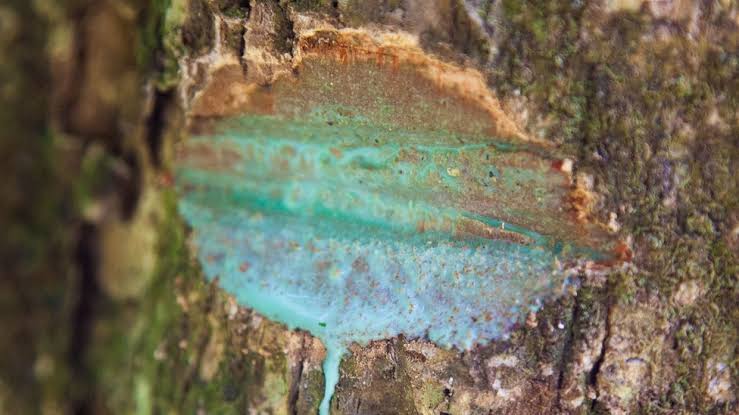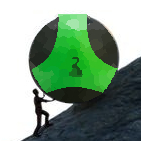I like the smell of dragons blood incense but I don’t want to buy it if it’s from an endangered species.
In before someone makes a joke about it being from real mythical dragons
Dragon’s Blood is a resin produced by a pretty large variety of species in a few genera, but is mostly cultivated from a handful of species in Dracaena and Calamus (formerly Daemonorops)
While historically the endangered Dracaena cinnabari and Dracaena draco were somewhat common sources in the incense trade of antiquity, today the majority is from rattan palms like Calamus rotang or less commonly (although seemingly more commonly in marketing) from Calamus draco which are extremely common and widespread across Asia, Africa, and Australia. The likelihood of getting something from an endangered source is slim to none.
(As always, happy to answer further taxonomy and botany questions, especially if this isn’t a sufficient answer)
I would love more botanyposting
My biggest barrier to botanyposting is not knowing what people want to know about.
I want to know how to remember all the damn terminology

I’m genuinely terrible at it, I constantly have to play a game of “Let’s Ask The Internet” and find out which of the like 50 genera in asteracea something is because I can’t remember shit when it comes to taxonomy. I’m pretty good with botanical phenotypes and phylogeny.
I want to know why over watering a succulent kills it, and why it happens so quickly. I’ve heard you’re almost not supposed to water it, but after ignoring one I was gifted it started to look bad then died after I watered it.
And I’m not talking a deluge, just enough to get the soil moist.
You don’t even really want the soil to be moist with succulent plants. Their roots are incredibly effective at soaking up water like a sponge, and their stems (and leaves, if they have them) are like balloons. Just like balloons, they burst if overfilled.
Plants don’t really pull in water with intention, so they’re not going to take only the amount they need. If you’ve overwatered a succulent you can’t just leave it in the pot and hope the water dries up. It’s just gonna keep soaking it up and damaging itself so you need to remove it from the pot and get the soggy soil off of its roots. You’ll wanna do this maybe every couple of weeks or so.
These plants have evolved to need little water given incredibly sparingly. For little baby ones, an eyedropper of water might even be too much. The trick is to soak the water but make sure that it all gets soaked up ordries really quickly, within a couple of hours at most. The soil should be pretty gritty and a bit loose. Not like you’d see for regular plants.
I don’t really understand these dudes. Succulents are wack. They’re not even all in the same family, they’re just a bunch of random plants from different families that all evolved to do the same wild shit. If you have a lot of trouble with them like I do, try air plants instead.
You’re actually supposed to give succulents thorough, infrequent watering. The roots die back when it’s dry and then they grow new ones to absorb water when it arrives. There needs to be enough water to make it worth the energy investment to grow new roots. These roots are susceptible to rot, so the soil needs to dry out quickly to control soil bacteria and fungi. If the soil is kept moist, the microbes take over, eat the roots, and kill the plant.
I think this is what happened. There’s no recovering it is there?
It depends on the species and how dead it’s looking. If this happened recently, you could try to pull off some of the more alive-looking leaves or pups and try to root them. If it’s a columnar cactus, you can cut off the top and see if the rot has reached all the way up. If the tissue looks healthy, you can leave the cut top out somewhere sunny until it calluses over, then plant it.
Dracaena
Calamus
Daemonorops
Wow botany can be fucking metal sometimes.
You wanna talk about literal metal botany, check out the hyperaccumulator Pycnandra acuminata native to Kanaky. It grows in this super nickel-rich soil and it produces this gorgeous turquoise latex that’s 25% nickel citrate by dry weight.


Hyperaccumulators are really interesting and could be super important for bioremediation efforts in coming years.
Wikipedia is a marginally better source than the seemingly LLM written articles on the topic
https://en.m.wikipedia.org/wiki/Dragon's_blood
It appears that the resin is harvested from a number of different plants, not just d. cinnabari or d draco the threatened ones. If you could see the ingredients of the incence you’re getting it may say what species it’s from…
Can confirm, wikipedia is right about this one!
Also, not at all surprised to learn that the Romans didn’t distinguish the plant resin from the mineral cinnabar because holy shit they just loved willingly consuming poison.
they just loved willingly consuming poison.
Truly, we are all Romans
Can’t relate, my diet consists of only homegrown hydroponic cannabis watered with reverse osmosis treated water.
Ty! I read your other comment in this thread too - very informative!
Natopedia becoming one of the most trustworthy sources by default solely because you can be relatively sure it was at least written by a human
I don’t know for sure, and I don’t think that anyone could without a genuine non-Kimberley/non-Fair Trade/other bogus certification process in place, but it appears as though most dragon’s blood resin that is commercially available is harvested from the fruit of a type of rattan palm.
(That’s operating on the assumption that dragon’s blood incense isn’t a synthetic fragrance that has been developed to mimic “genuine” dragon’s blood incense at a lower cost of production.)
It’s hard to know a lot about this production process but if you’re harvesting the resin from the fruit of a tree then that’s more sustainable for habitats since you aren’t harming or cutting the trees themselves down. It’s hard to imagine a stable supply chain that sources all of its dragon’s blood resin from threatened dracaena trees on Socotra without it coming at a hefty premium that would make your eyes water at the cost of true Socotran dragon’s blood resin incense, especially if a country like Indonesia can mass produce a very similar resin in a relatively sustainable way.
I’d withhold judgement until you get more solid information but, at a wild guess, I think that it’s probably not a huge concern.
Also note that crunchy stuff like this loves to market itself as being produced from ingredients from exotic locations by native peoples from some rare source that is of spiritual/cultural/environmental significance. Himalayan sea salt invokes notions of Tibetan Buddhist monks using hand tools to mindfully carve out small amounts of magical, spiritual salt from traditional meditation caves because of the conscious choice of labelling it that way. It doesn’t invoke notions of Pakistani Muslims using modern machinery to carve out huge blocks of salt from their salt mines because people are less inclined to give salt mined that way some aura of faux-spirituality and reverence due to that dualistic nature of orientalism (“Eww, yucky brown Muslims are dirty and sneaky and untrustworthy!!”/“Wow, those Asian Buddhists are so noble and glorious and spiritually in tune with compassion and the environment. So wholesome!!” – both are gross and interdependent in a dialectical sense imo, although one is much more benign than the other.) I would view any information on the back of a product that is marketed to a crunchy demographic with deep skepticism personally. There’s basically no regulations about whatever bullshit fairytale a product like this can spin. Yay capitalism!
Since the resin produced by Dracaena spp. and Calamus spp. is the same, it’s quite convenient to just cultivate a huge amount of C. rotang, C. javensis, and C. caesius in the undergrowth of rubber plantations in southeast Asia. It grows like grass would, so it’s very likely not even something that has to be intentionally cultivated on a lot of these farms.
The resin itself is mostly a byproduct of the rattan which is primarily grown for wickerwork. Basically just a bonus extra thing you can sell to crunchies while you’re growing rattan as a secondary crop in between your rubber trees. I can’t imagine anyone bothering to create a synthetic process to produce something that’s otherwise just a free waste product of something massively cultivated for free.
Indonesia is in fact the #1 producer of both rattan and Dragon’s Blood incense, and the #2 producer of natural rubber.
There is is! Excellent work, comrade.
You are some kind of plant genius









